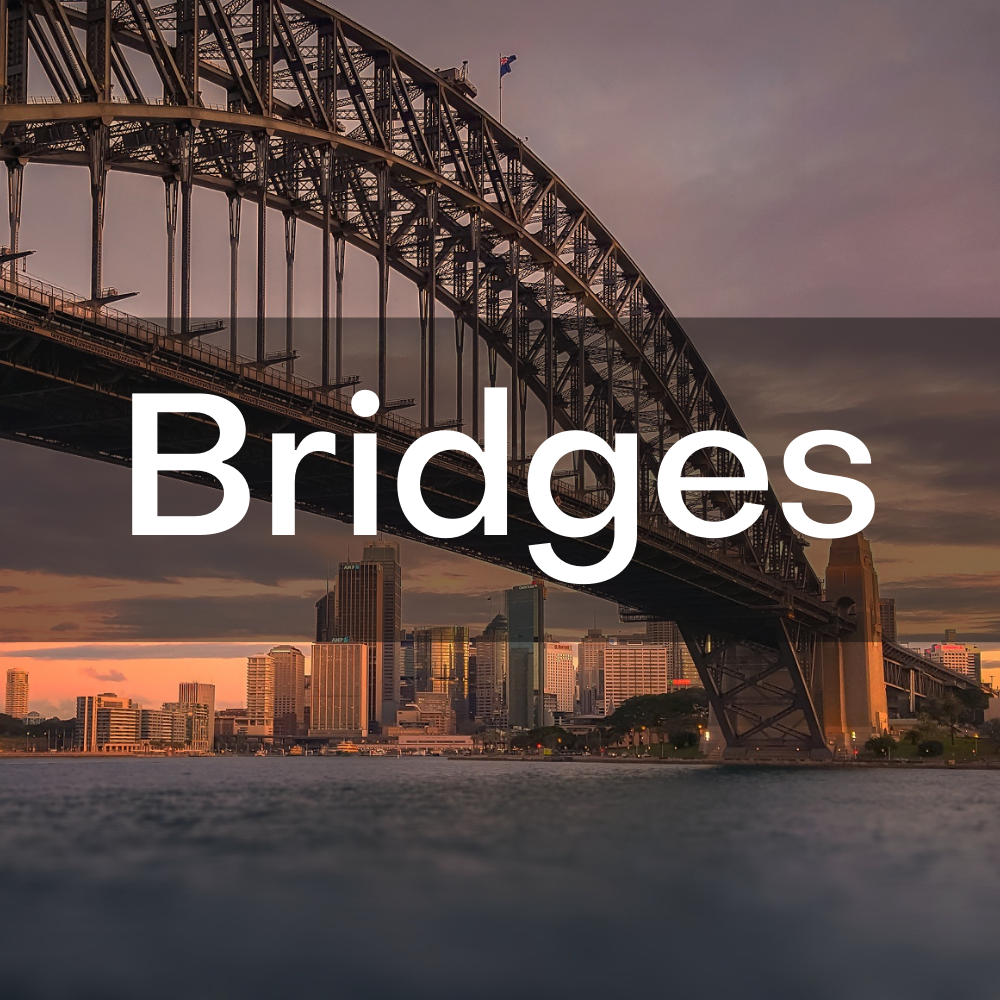
Webinar
Park Union Pedestrian Bridge
August 15, 2024 | Thu 12:00 America/Chicago
Duration: 1.0 Hour
CE Credits: 1.0
$300
Arup is the Engineer of Record for the Park Union Bridge, opened to pedestrians in July 2021, connecting the U.S. Olympic & Paralympic Museum to America the Beautiful Park and Downtown Colorado Springs. Called the rip curl for its cresting design, the footbridge was collaboratively shaped with Design Architect DS+R and spans 245ft over active rail lines. The 300 ton steel superstructure is designed to both integrate with the aesthetic vision for the museum and to minimize impact on rail operations during construction.
One of the key project successes for the design team was producing a design that struck a balance between achieving the aesthetic vision and minimizing the impact on the railroads below. From bridge inception, the designers leveraged their parametric 3-D work environment to communicate visually and explain crucial aspects of the bridge behavior among themselves and with key collaborators of the project team.
The design team collaboratively massed, rationalized, and managed the steelwork 3-D model in Rhino with a Grasshopper parametric plug-in. To realize this structure, the design team carried out global, modal, spectral, footfall, buckling analysis, and wind tunnel testing. When preliminary desktop studies showed a potentially divergent response to wind, Rowan Williams Davies & Irwin Inc. (RWDI), located in Ontario, Canada, was commissioned to design and build an aeroelastic model used to evaluate the wind-induced responses of the bridge. All analysis was completed in Oasys GSA, which linked parametrically to the 3-D steelwork model.
Building over railroads presents unique constraints both in design and construction. Maintaining railroad operation unimpeded during erection was a key driver in the design; the yard includes thirteen rail tracks with two through tracks that have freight train traffic of approximately ten trains per day. The bridge was erected 3 hours faster than the allowed 8 hour window.
- Course will award 1.0 hour of continuing education
- Diamond Review approved in all 50 states
- This webinar will be available as a recording.
Please note: This webinar is part of the NCSEA Webinar Subscription.
Are you a Webinar Subscriber?
Arup is the Engineer of Record for the Park Union Bridge, opened to pedestrians in July 2021, connecting the U.S. Olympic & Paralympic Museum to America the Beautiful Park and Downtown Colorado Springs. Called the rip curl for its cresting design, the footbridge was collaboratively shaped with Design Architect DS+R and spans 245ft over active rail lines. The 300 ton steel superstructure is designed to both integrate with the aesthetic vision for the museum and to minimize impact on rail operations during construction.
One of the key project successes for the design team was producing a design that struck a balance between achieving the aesthetic vision and minimizing the impact on the railroads below. From bridge inception, the designers leveraged their parametric 3-D work environment to communicate visually and explain crucial aspects of the bridge behavior among themselves and with key collaborators of the project team.
The design team collaboratively massed, rationalized, and managed the steelwork 3-D model in Rhino with a Grasshopper parametric plug-in. To realize this structure, the design team carried out global, modal, spectral, footfall, buckling analysis, and wind tunnel testing. When preliminary desktop studies showed a potentially divergent response to wind, Rowan Williams Davies & Irwin Inc. (RWDI), located in Ontario, Canada, was commissioned to design and build an aeroelastic model used to evaluate the wind-induced responses of the bridge. All analysis was completed in Oasys GSA, which linked parametrically to the 3-D steelwork model.
Building over railroads presents unique constraints both in design and construction. Maintaining railroad operation unimpeded during erection was a key driver in the design; the yard includes thirteen rail tracks with two through tracks that have freight train traffic of approximately ten trains per day. The bridge was erected 3 hours faster than the allowed 8 hour window.
- Course will award 1.0 hour of continuing education
- Diamond Review approved in all 50 states
- This webinar will be available as a recording.
Please note: This webinar is part of the NCSEA Webinar Subscription.
Speaker:

Lana Potapova, is an Associate in Arup’s New York Bridge Group. Lana has a broad range of experience as a design-focused structural engineer ranging from significant cable-stay bridges, and award-winning infrastructure projects to unique footbridges. Lana’s engineering experience spans across USA and Canada including leading design and authoring technical design reviews. She has familiarity with various procurement methods, with a particular expertise in working on design-build projects, developing designs both on behalf of the owner and the contractor. Lana’s expertise in parametric modeling tools allow for highly efficient design of large infrastructure projects and drastically facilitate the delivery of bridges with complex geometries. Lana has a strong interest in marriage of structure and architecture; she assisted teaching graduate architecture studios at Columbia University, has published work in collaboration with Harvard Graduate School of Design, and is a guest steel design lecturer at the Manhattan College.
NCSEA Webinars and Digital Events Cancellation and Refund Policies
Webinar Cancellation
By NCSEA: If a webinar is canceled by NCSEA, all registered attendees will be notified via email. NCSEA will issue a full refund if the event cannot be rescheduled. If the event is rescheduled and a registrant can not attend on the rescheduled date, NCSEA will offer a credit in the amount of the purchase price.
By Registrant/Attendee: Cancellations must be made at least 24 hours in advance of the webinar (or the first webinar in the case of a series or bundle) and in writing via email ( ncsea@ncsea.com) with the subject line “NCSEA Webinar Cancellation” and include the following in the body of the email: Title of Webinar, Order/Invoice Number, Name of Registrant, and Reason for Cancellation. No telephone refund requests will be accepted.
If the request has been approved, NCSEA can do one of the following:
- Refund the amount back to the original order payment method (a $25 cancellation processing fee will be assessed)
- Issue a full credit on the purchaser’s account that can be used towards a future webinar/event.
If you are unable to attend the webinar and the cancellation deadline has passed, a recording will be available (in most cases) in the Education Portal after the webinar has concluded.
Refunds are not granted due to attendee technology issues. It is your responsibility as the webinar attendee to test your computer setup prior to the start of the webinar.
On-Demand Purchases
All on-demand (recorded) webinars, courses, and series sales are final.



